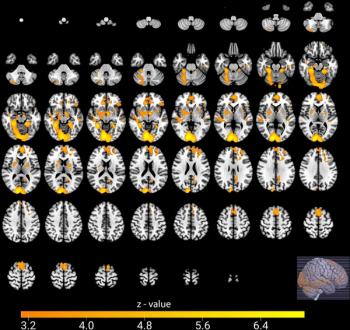
MRI Images Show Brain Volume Shrinks As Adults Age
Accurate measures of brain volume could bolster assessments of neurological health.
The intracranial volume of the brain changes as adults age, according to MR images, potentially revealing a method for determining a patient’s neurological health.
In a study published in
Providers typically use intracranial volume as a marker for evaluating various psychological conditions, including dementia or schizophrenia. But, to-date, there’s been little research into how volume changes as adults get older and what those alterations might mean about brain function and activity.
“Intracranial volume is a key biological marker, and changes in the intracranial volume during the lifespan can teach us about the biology of development, aging, and gene X environment interactions,” wrote a team led by Yaron Caspi, Ph.D., from the University Medical Center Utrecht. “However, whether intracranial volume changes with age in adulthood is not resolved.”
To determine whether and how volume changed over time, Caspi’s team developed an algorithm to assess intracranial volume in adults in these age groups who received T1-weighted imaging via a 1.5T MRI scanner. The investigators divided the participants, who were part of an existing schizophrenia study, into three groups - a healthy control groups, those diagnosed with schizophrenia, and children of patients diagnosed with schizophrenia.
Patients underwent their first MRI scan between ages 16 and 55, and follow-up images were conducted a little more than three years apart. Researchers collected 528 images during the first round, 378 during the second, and 309 for the third round of scanning.
According to the results, individual intracranial volume did not change significantly between younger adults and those in their 50s. However, they did identify statistically-significant changes between ages 20 and 35. Between those ages, participants experienced an average 2.9 ml intracranial volume increase - roughly 0.5 ml (0.03 percent) per year, beginning at age 20. That average began to decrease by 1.3 ml (0.09 percent) annually by age 55.
The investigators noted that the age at which individuals begin to see a decline in intracranial volume -- in their sixth decade -- is the same decade of life when the white matter in the brain also starts to shrink to speeds up shrinking.
“This raises the possibility that these two processes result from a shared genetic cause, which will be an interesting hypothesis to check in future works,” they said.
Ultimately, Caspi’s team indicated they hoped their investigation would prompt further longitudinal research into this area, adding to the knowledge base around the aging of the brain and the impact of genetic and environmental factors.
Newsletter
Stay at the forefront of radiology with the Diagnostic Imaging newsletter, delivering the latest news, clinical insights, and imaging advancements for today’s radiologists.


























